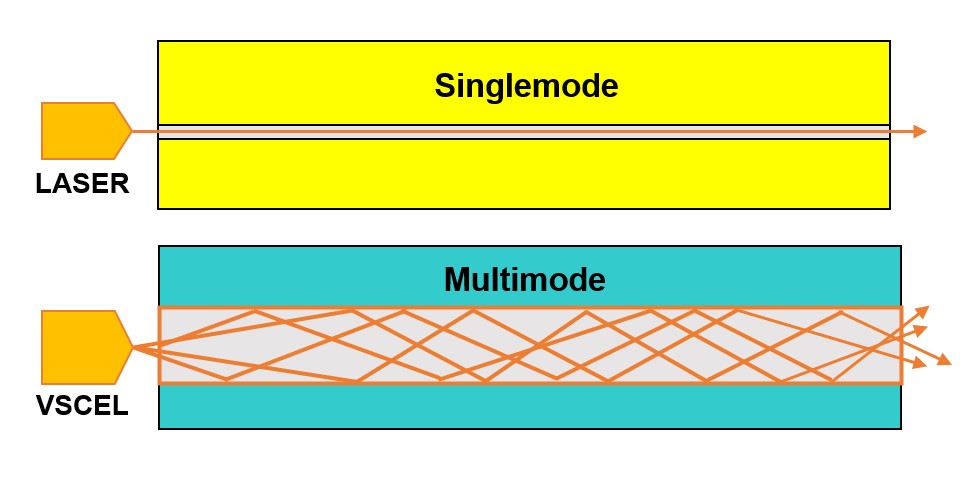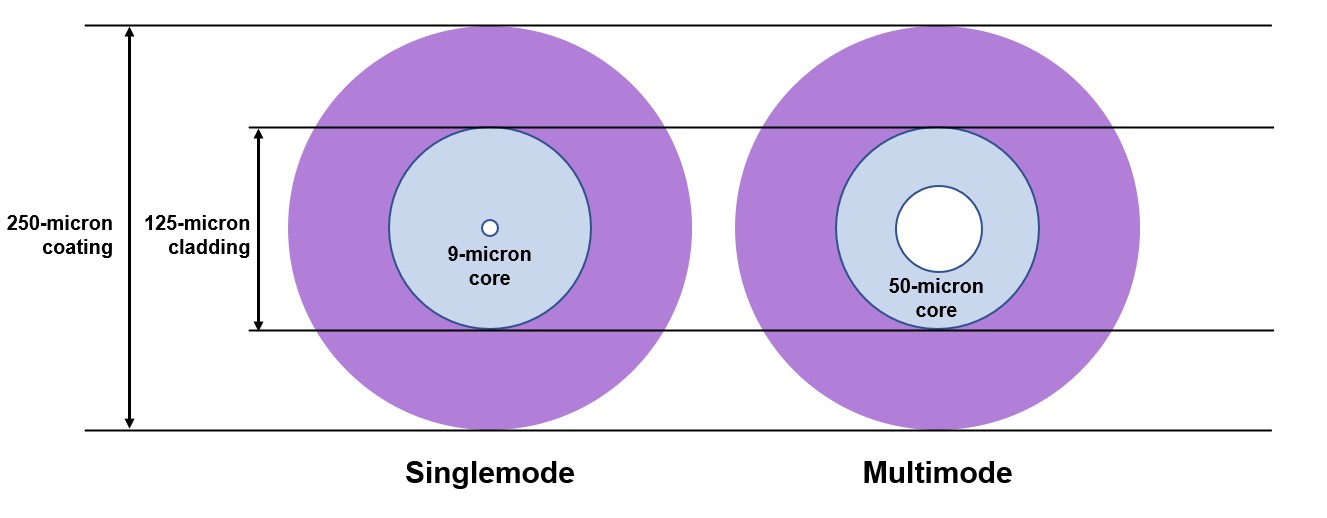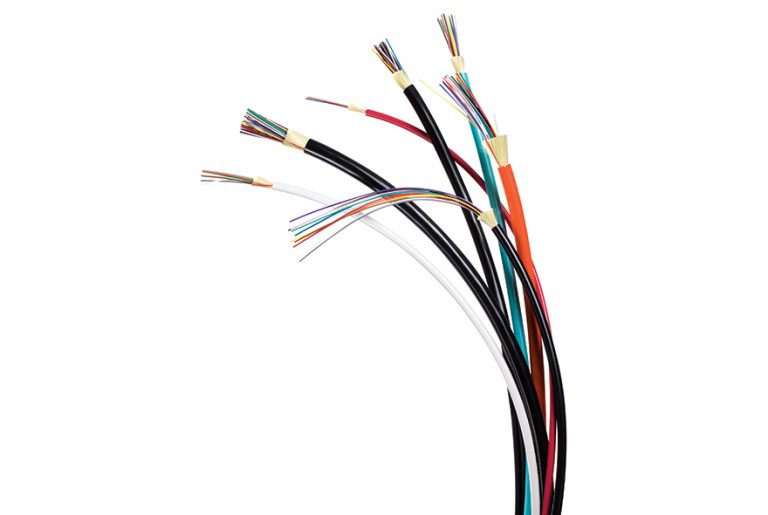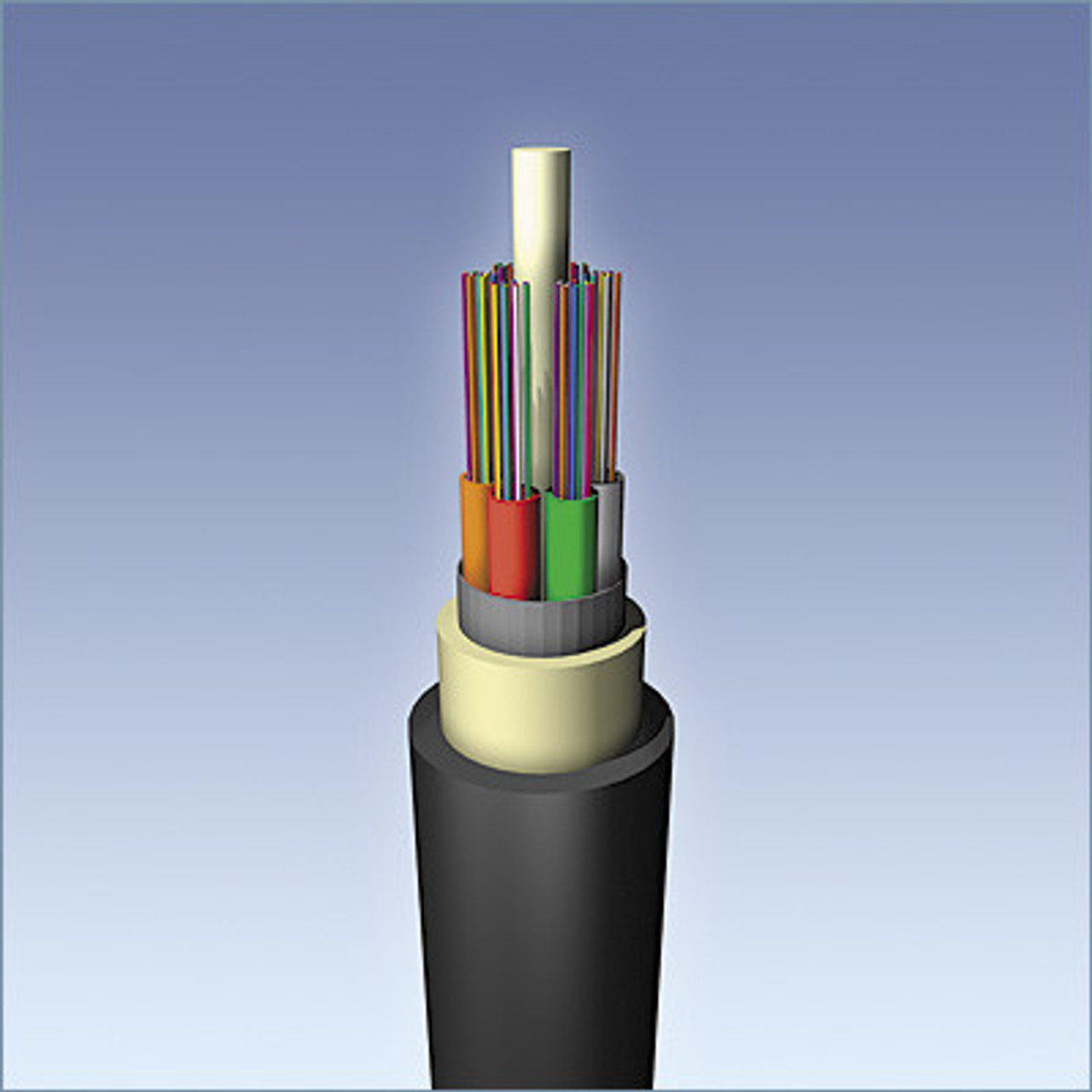
Fiber optic cable is a vital component of every network—whether it’s an outside plant (OSP) service provider network, data center, or LAN. Knowing how much fiber optic cable costs, which factors can impact cost, and key cost considerations can help you avoid unnecessary expense and get the most out of your budget.
Fiber type, construction, and application matters
Several fiber cables are available, each with a different cost based on fiber type, construction, and application. First and foremost, fiber cables are either singlemode or multimode. Singlemode cables with a small core diameter of 9 microns use high-power laser light sources to support high-speed transmission over long distances of up to 40 kilometers or more. Singlemode cable is the de facto cable in outside plant (OSP) service provider networks and often deployed for backbone cabling in the LAN. Singlemode is also becoming more common for switch-to-switch links in the data center due to its higher bandwidth capabilities.

In contrast, multimode cables have a larger core diameter of 62.5 or 50 microns that use vertical-cavity surface-emitting laser (VSCEL) light sources. In a multimode fiber cable, light signals travel in multiple paths or modes, which limits the bandwidth capabilities of multimode fiber and results in much shorter distances.
Multimode fiber cables are primarily limited to data center links but can comprise backbone cabling in the LAN and between buildings in a campus scenario (depending on speed and distance). Multimode cables also come in different performance levels, including legacy OM1 with a 62.5-micron core and OM3, OM4, and OM5 with a 50-micron core. Click HERE to learn more about the various types of multimode fiber. Note that the fiber strands in both multimode and singlemode cables are the same size due to the 125-micron cladding layer surrounding the core. As shown below, a 250-micron coating encases each 125-micron fiber for protection.


Fiber cables also come in either tight-buffered or loose-tube construction. Tight-buffered cables include a 900-micron protective plastic layer over the 250-micron coating on each fiber strand. These cables are available as distribution cables with multiple fibers bundled together for intra-facility applications or as breakout cables where each fiber has an outer jacket for separate device connections. In a tight-buffered cable, aramid yarn surrounds the fibers, protecting them during tension.

In contrast, loose-tube fiber cables do not contain the 900-micron protective layer over each strand, resulting in an overall smaller cable diameter. In a loose-tube cable, the strands are packed into individual tubes. These cables can contain very high counts of fiber strands—up to 1728 fibers or more. They are used primarily in data center applications and OSP deployments, with OSP cables featuring water-blocking technology. High-count loose-tube fiber cables might also be constructed of ribbon fiber that groups 12, 16, or 24 individual fiber strands into flat strips arranged linearly or rolled and packed into tubes.
Once we move past fiber type and overall construction, fiber cables can have additional features to suit various applications. For example, fiber cables can have different jacket ratings based on deployment location and required fire rating, such as plenum, riser, OSP, or flame retardant. Cables can also be rated as indoor/outdoor with water blocking, which allows for transitioning from the outdoor to indoor environment with the same cable, eliminating the need for splicing. There are also armored fiber cables that feature corrugated steel tape (CST) or interlocking armor (ILA) for greater durability to withstand harsh environments and for security and protection from rodents. These cables are often deployed for underground direct-burial installations and industrial environments. Specialty cables for military applications that meet MIL-SPEC requirements or broadcast series cables designed for flexibility and crush resistance to withstand crowd and vehicle traffic are also available.
How are fiber cables priced?
Fiber cables can be purchased in bulk or as pre-terminated fiber assemblies, pigtails, and patch cables. Understandably, pre-terminated assemblies, pigtails, and patch cables carry a higher cost due to their factory termination. That cost can also vary greatly depending on fiber count and connectivity type. However, bulk fiber cable terminated on site, such as for long outside runs or building LAN backbones between telecom closets, is typically priced per foot.
The per-foot cost of bulk fiber cable is a great way to see the price differential. The following comparison table shows average cable costs for various types of 24-fiber tight-buffered fiber cables. It’s clear to see that different types, ratings, and applications carry different pricing. It’s also clear that singlemode cable is almost always less expensive than multimode. But cable cost is not the only consideration.
| 24-Fiber Tight-Buffered 900μm Bulk Cable | |||
| Fiber Type | Construction | Rating & Applications | Avg. Cost/Foot |
| OM1 Multimode | Distribution | Indoor/Outdoor Plenum | $2.50 |
| OM3 Multimode | Distribution | Indoor/Outdoor Plenum | $3.50 |
| OM4 Multimode | Distribution | Indoor/Outdoor Plenum | $4.50 |
| Singlemode | Distribution | Indoor/Outdoor Plenum | $2.00 |
| OM3 Multimode | Distribution | Indoor/Outdoor Plenum, Chemical Resistant | $4.00 |
| OM4 Multimode | Distribution | Indoor/Outdoor Plenum, Chemical Resistant | $5.50 |
| Singlemode | Distribution | Indoor/Outdoor Plenum, Chemical Resistant | $2.00 |
| OM3 Multimode | Distribution | Indoor/Outdoor Plenum, ILA Armored | $12.50 |
| OM4 Multimode | Distribution | Indoor/Outdoor Plenum, ILA Armored | $13.50 |
| Singlemode | Distribution | Indoor/Outdoor Plenum, ILA Armored | $7.00 |
| OM1 Multimode | Distribution | Outdoor Burial, CST Armored | $4.00 |
| 0M4 Multimode | Distribution | Outdoor Burial, CST Armored | $7.00 |
| Singlemode | Distribution | Outdoor Burial, CST Armored | $2.50 |
| OM1 Multimode | Distribution | Military Tactical | $7.50 |
| OM3 Multimode | Distribution | Military Tactical | $8.50 |
| Singlemode | Distribution | Military Tactical | $6.00 |
| OM1 Multimode | Distribution | Indoor/Outdoor Broadcast Rated | $5.00 |
| Singlemode | Distribution | Indoor/Outdoor Broadcast Rated | $3.50 |
| OM1 Multimode | Breakout | Indoor/Outdoor Plenum | $5.50 |
| OM3 Multimode | Breakout | Indoor/Outdoor Plenum | $7.00 |
| OM4 Multimode | Breakout | Indoor/Outdoor Plenum | $10.00 |
| Singlemode | Breakout | Indoor/Outdoor Plenum | $4.00 |
More to consider
When it comes to a network cabling system, there is much more than the cost of the actual cable to consider. When buying bulk cable, it’s also essential to consider the connectivity cost and the termination process, as the various options have pros and cons. For example, higher-cost pre-terminated fiber assemblies often make more sense for short switch-to-switch and switch-to-server links in the data center due to faster plug-and-play installation with no specific fiber termination skills required, no consumables, and little waste. They also offer superior performance due to factory termination with less variability and minimal risk of contamination. Click HEREto learn more about the pros and cons of various termination methods.
Another consideration is the actual cost of the equipment based on the application. High-power laser transceivers used for singlemode applications are much more expensive than multimode VCSEL transceivers. However, sometimes there is no choice—long-haul, high-speed links in service provider networks will always require singlemode. Singlemode is also recommended for most high-speed LAN backbone cables. Multimode will support 10 Gigabit speeds to about 500 meters for use in the LAN backbone, but it’s not a future-proof solution. When upgrading to speed beyond 10 Gig, multimode will only support 100 meters, which might not be enough distance for your LAN backbone.
For shorter data center links, choosing between singlemode and multimode can be a bit trickier. Singlemode transceivers are typically far more expensive than multimode, but new short-reach singlemode applications use lower-power lasers that significantly reduce the cost. These applications can support 400 and 800 Gigabit applications to 500 meters – more than four times the distance of multimode – at roughly the same cost. So if you need a little more distance than what multimode can provide, short-reach singlemode may be the most cost-effective option. To learn more about the latest cabling considerations in the data center, check out our article on “ Innovating the Path to Terabit Speeds” published by Data Center Frontier.
The good news is that CablesPlus USA is always ready to help you choose the right fiber cable for your application and your budget, and we offer a vast selection of bulk fiber cables. We also carry everything you need to deploy end-to-end fiber networks—from outside plant and indoor LAN to the data center—including pre-terminated assemblies, patch cables, pigtails, connectivity, test equipment, tools, and more.

